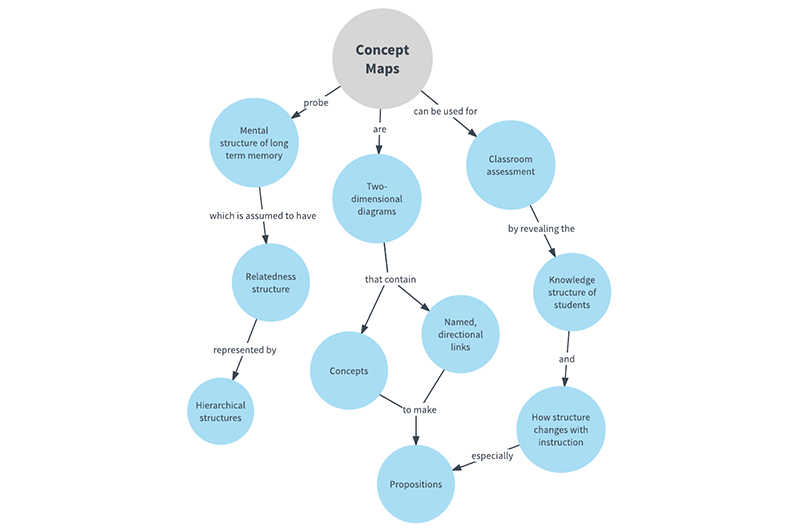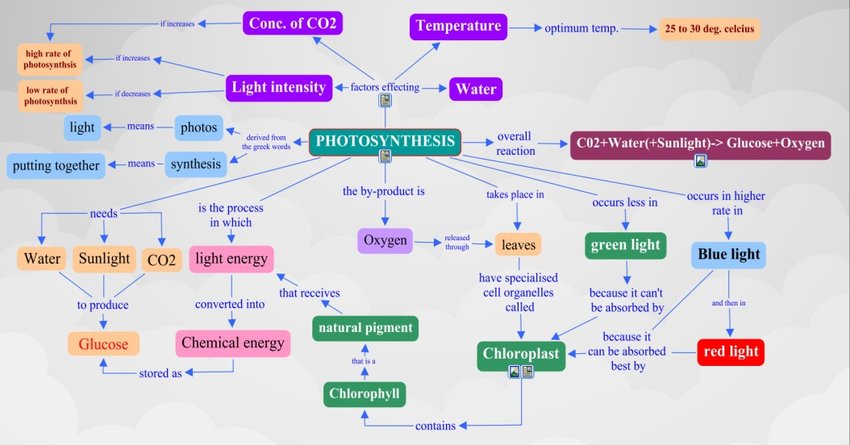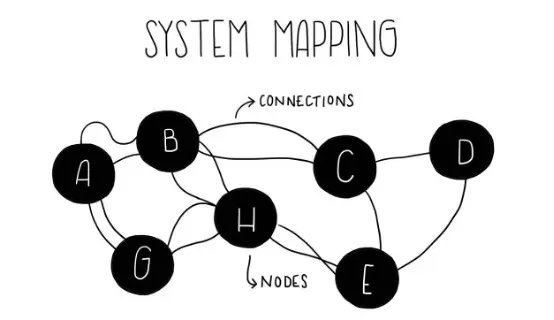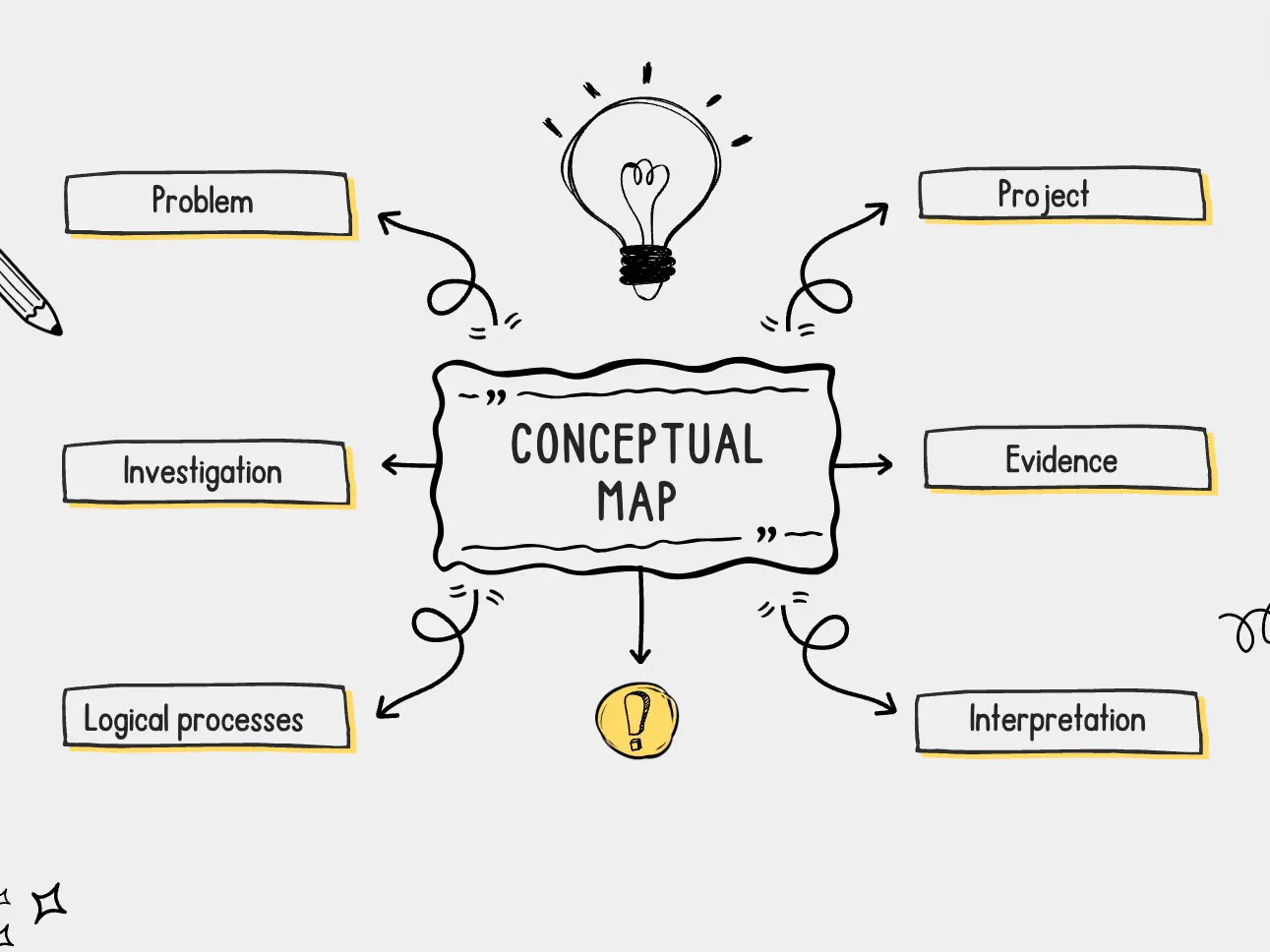In education, work, and everyday life, concept maps have become an essential tool. Whether for organizing information, planning projects, or enhancing understanding, concept maps excel in various roles. This article delves into the purposes of concept mapping and how it helps us better handle information.

Image from:Xmind
What is a Concept Map?
A concept map is a graphical tool used to represent knowledge structures and the relationships between information. By visualizing concepts as nodes and connecting them with lines, concept maps make complex topics and information more comprehensible.

Image from:TopHat Blog
Main Purposes of Concept Mapping
The primary purpose of concept maps is to help organize and structure information. When dealing with large amounts of data, we often feel overwhelmed and unsure of how to effectively arrange it. Concept maps break information into smaller, manageable parts, connecting these parts with nodes and lines to create a clear structure. This visual organization helps us see the relationships between concepts more clearly, enhancing our understanding.
2. Enhancing Understanding
Another important purpose is to enhance our understanding. Creating a concept map requires deep thinking and organizing of the material. This process not only clarifies the relationships between concepts but also encourages a deeper comprehension of each concept and its role within the overall structure. Research shows that concept maps can improve students’ learning outcomes, leading to better retention and comprehension.
Concept maps also foster critical thinking. During the process of building a concept map, we evaluate the importance of different concepts and their interconnections. This analysis and assessment encourage us to consider various viewpoints and the relative value of information, thereby enhancing our critical thinking skills. By continuously adjusting the structure of the concept map, we can discover new connections and potential errors, improving our thinking process.
4. Facilitating Effective Communication
In teamwork and project management, concept maps help facilitate effective communication. By presenting information visually, team members can more easily understand each other’s perspectives and tasks. This clear representation reduces misunderstandings and confusion, improving team collaboration efficiency. Using concept maps at the start of a project can help the team align on goals and tasks, ensuring smoother progress.
5. Supporting Problem Solving
Concept maps play a crucial role in problem-solving. They help us systematically analyze problems, identify root causes, and develop effective solutions. By clarifying different aspects of a problem and their relationships in a concept map, we can address issues in a more organized manner. This is particularly useful for complex or multi-layered problems, allowing for a step-by-step approach to finding solutions.
6. Enhancing Learning and Memory
Concept maps are effective tools for enhancing learning and memory. By visualizing information, we present knowledge in a more structured way, making acquisition and retention more efficient. The hierarchical structure and connections in concept maps help link new knowledge with existing knowledge, deepening memory. Educational research indicates that using concept maps can significantly improve students’ memory and academic performance.
7. Aiding in Planning
In personal and team planning, concept maps are valuable tools. They help us clarify goals, identify key steps, and organize these steps logically. Creating a concept map allows us to clearly see the path to achieving goals and important considerations. This structured planning approach enhances the feasibility and success rate of plans.
8. Fostering Creativity and Innovation
Concept maps also promote creativity and innovation. During brainstorming sessions, concept maps help capture and organize different ideas and explore their potential connections. This visual thinking approach can stimulate new ideas and solutions, assisting in the exploration of innovative possibilities.
9. Evaluating and Providing Feedback
In project management and learning, concept maps can be used for evaluation and feedback. Analyzing a concept map helps identify gaps and errors in information, leading to improvements. Teachers can use concept maps to assess students’ understanding, while teams can use them to review project progress and outcomes.

Image from:Printable Templates Free
Applications of Concept Maps
1. Educational Settings
- Enhancing Learning and Teaching
In educational environments, concept maps are used to enhance both teaching and learning. Teachers utilize them to present complex concepts in a simplified manner, showing students how different ideas are interconnected. For students, creating their own concept maps helps in organizing their thoughts, understanding material more deeply, and preparing for exams by visualizing the relationships between concepts.
Educators use concept maps to design and structure curricula. By mapping out the main topics and their subtopics, educators can ensure that the curriculum covers all necessary material in a logical sequence. This helps in identifying gaps and redundancies, leading to a more coherent and comprehensive educational program.
2. Business and Project Management
In the business world, concept maps assist in strategic planning by visualizing the goals, objectives, and strategies of an organization. By mapping out these strategic elements and their relationships, businesses can better understand the steps needed to achieve their goals and make informed decisions about resource allocation.
Concept maps are valuable tools in project management for planning and tracking progress. They help project managers break down projects into manageable tasks, identify dependencies, and visualize the project timeline. This aids in efficient resource management and ensures that all aspects of the project are accounted for.
3. Research and Development
- Organizing Research Findings
Researchers use concept maps to organize and synthesize research findings. By mapping out key concepts, theories, and their relationships, researchers can see the bigger picture, identify trends, and generate new research questions. This visual representation helps in making sense of complex data and presenting it clearly.
- Brainstorming and Idea Generation
During the brainstorming phase of research and development, concept maps facilitate the generation and organization of ideas. They help in exploring different aspects of a problem, identifying potential solutions, and visualizing how new ideas connect with existing knowledge.

Image from:Research Masterminds
4. Personal Development
- Goal Setting and Achievement
For personal development, concept maps are used to set and track personal goals. By visualizing goals and the steps needed to achieve them, individuals can create actionable plans and monitor their progress. This helps in staying motivated and organized in pursuing personal objectives.
- Problem-Solving and Decision-Making
In everyday life, concept maps can aid in problem-solving and decision-making. By mapping out the components of a problem and the possible solutions, individuals can evaluate options, weigh pros and cons, and make informed decisions. This structured approach helps in addressing personal challenges more effectively.
5. Health and Wellness
- Managing Health Conditions
Concept maps are useful for managing health conditions by helping individuals understand the relationships between symptoms, treatments, and lifestyle factors. For instance, patients with chronic conditions can use concept maps to track symptoms, medications, and lifestyle changes, providing a comprehensive view of their health.
- Planning Wellness Programs
Health professionals use concept maps to design and implement wellness programs. By mapping out the components of a wellness program—such as diet, exercise, and mental health—health professionals can create integrated plans that address all aspects of wellness, leading to more effective programs.
6. Communication and Collaboration
- Facilitating Team Meetings
In collaborative environments, concept maps help facilitate team meetings by providing a clear visual representation of discussions. They can be used to outline meeting agendas, capture key points, and track decisions made during the meeting. This ensures that everyone is on the same page and helps in follow-up actions.
- Enhancing Client Presentations
For professionals working with clients, concept maps enhance presentations by visually organizing information and making complex ideas more accessible. This helps in clearly communicating proposals, project plans, or findings, and ensures that clients understand the information presented.
- Designing Software Architecture
In software development, concept maps are used to design and visualize software architecture. By mapping out the different components of a software system and their interactions, developers can plan the architecture more effectively and identify potential issues before implementation.
- Developing User Interfaces
Concept maps assist in developing user interfaces by visualizing user workflows and interactions. This helps designers understand how users will navigate through the application and ensures that the user interface is intuitive and user-friendly.

Image from:Educational Technology
Conclusion
Concept maps, as a versatile tool, not only serve crucial purposes such as organizing information, enhancing understanding, promoting critical thinking, facilitating effective communication, and supporting problem-solving but also demonstrate their unique value across various practical applications. In education, they help simplify complex concepts and design effective curricula for both students and teachers; in business and project management, they assist in strategic planning and task tracking; in research and development, they aid in organizing research findings and sparking creativity; in personal development, they support goal setting and problem-solving; in health and wellness, they help manage health conditions and plan wellness programs; in communication and collaboration, they facilitate team meetings and client presentations; and in software and digital tools, they support architecture design and user interface development. By applying concept maps in these diverse contexts, we can more effectively handle information, improve our thinking abilities, and optimize decision-making processes, leading to greater clarity, efficiency, and success.
.DdCaW3aU_Z1UlSkj.webp)

.BOgX9RtS_ZU8DN8.webp)





